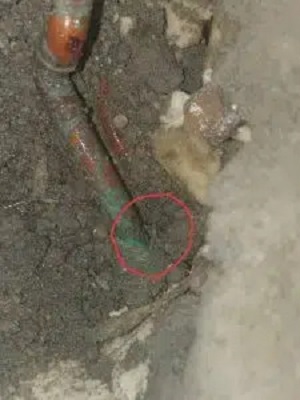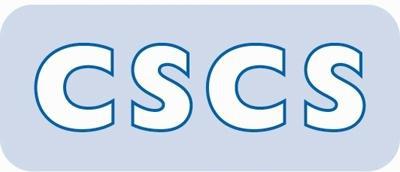How To Find a Water Leak Under Floor
You can find water leaks under flooring using audio and visual clues.
According to Ofwat, the UK water regulator, roughly a fifth of running water is lost due to water leaks. While finding a water leak underneath floor coverings can seem challenging, it hasn’t been more important to combat this issue and preserve this precious resource – and prevent water damage to your home!
Depending on the type of flooring material you have, water leaks present themselves in various ways. For instance, signs of a leak under floorboards include a damp smell or a sagging ceiling below in double-storey homes. Signs of a leak under a concrete floor include cracks in the concrete slab, damp spots, or water-stained flooring.
Our guide will equip you to identify water leaks under various types of floor coverings, saving you time, money, and sanity.
You don’t need to stress about your expensive floor coverings, as our leak-finding techniques are non-invasive. Our water leak detection engineers use tracer gases, acoustic listening devices, and thermal imaging cameras to trace water leaks under flooring.

Signs Of A Leak Under Floorboards
The symptoms of a leak under floorboards include the following visual signs:
- Floorboards will buckle and warp in the presence of leaking water.
- Brown or yellowish water stains appear on floorboards due to water leaks.
- Mould growth is a common indicator of hidden leaks.
- Ceilings (below wooden floors) droop in the event of escaping water.
- Unexplained pools of water or excessive moisture levels are common leak signs on wood floors.
Other tell-tale signs of wooden floor water leaks include:
- Musty odours indicate leaking water. Mould growth, caused by excess moisture (i.e. leaks) has a distinctive “musty” smell.
- Increased water bills and irregular water meter readings show there are water leaks on your property.
- Water pressure levels drop when there are water leaks in your system as the leak diverts water flow.
- Uneven creaking sounds occur as a result of uneven drying of wet floorboards.
Next, we’ll move on to water leak detection tips for concrete flooring.
Signs Of A Leak Under A Concrete Floor
The symptoms of a leak under a concrete floor include:
- Cracks in concrete slabs, particularly near walls or plumbing fixtures, are common water leak signs.
- Puddles or persistent damp areas indicate the presence of subsurface moisture.
- A white powdery substance, called efflorescence, appears on concrete coverings when leaking water is present.
- Mould or mildew growth is a common sign of persistent water seepage, as mould spores thrive in damp environments.
- Dark patches or water stains on concrete slabs signal hidden water leaks beneath the surface.
Other tell-tale signs of concrete floor water leaks include:
- The sound of running or gurgling water, when systems are not in use, are auditory signs of a water leak.
- Olfactory odours, like musty smells, are common indicators of leaking water.
A rise in water and energy bills is an expected sign of water leaks. - Loss of water pressure throughout your house signifies potential diversion of water flow due to a leak.
- Cracks, warping, bending, or water stains on ceilings are caused by leaking water beneath the surface.
- In severe cases, water leaks can cause unevenness when concrete slabs shift or even become ‘bouncy’ when walking on them.
Let’s move on to how homeowners can find a leak on their property, next.
How To Detect A Water Leak Under A Floor
Detecting a water leak under the floor may seem complex, and the help of plumbing professionals is your best bet. Professional leak detectors use specialised leak detection gear, such as acoustic listening devices, thermal imaging cameras, and damp meters to trace and locate leaks under floors.
However, if you want to put your DIY skills to good use, here are some steps you can take to find a water leak under your floor:
Step 1: Conduct a visual inspection of water leaks
- Scrutinise wooden floors for symptoms of warping, buckling or discolouration which are telltale signs of water damage and leaks.
- Check for cracks, efflorescence, or pooling water on concrete floor coverings.
- Don’t neglect ceilings or surrounding walls as part of your water leak detection investigation. Look for cracks, warping or bending that could indicate water seepage from above, below, or adjacent areas.
Step 2: Conduct an auditory inspection of water loss
- Turn off all water main pipes (e.g. cold supply pipes and hot supply pipes) to isolate any leaks.
- Faint trickling, gurgling, or bubbling sounds signify water loss beneath the surface.
Step 3: Conduct an olfactory inspection
- Musty, mouldy smells occur in damp environments and are typically associated with leaking water.
Step 4: Check the water meter and water bills
- Understanding your household’s average water consumption is an important step when trying to figure out water loss issues.
- Unusually high meter readings and water bills are strong indicators of water leaks.
- Water leaks will cause water meters to run even when the main supply pipe network is shut off.
Other methods
- Use moisture meters to detect leaks underneath floor coverings.
- Leak detection specialists use thermal imaging cameras to locate water leaks in hidden areas, such as inside cavity walls, under wood floors or within swimming pools.
- If you suspect a leak but can’t pinpoint the source, consider hiring a professional. ADI Leak Detection uses specialised equipment and has the expertise to locate hidden leaks on your property.
Acoustic listening equipment
Acoustic listening equipment are specialised water leak detection tools used to pinpoint the leak source within pressurised water pipes. When pinpointing leaks buried beneath the floor, acoustic listening devices are important tools in a professional leak detector toolbox.
This equipment comprises several key elements used to amplify hidden soundwaves (i.e. the leak noise) caused by flowing water.
Key components of acoustic devices pick up the vibration emitted by rushing water. These include sensitive microphones and sensors, amplifiers (used for amplification of leak sounds) and headphones to detect water leaks and leak noises. Leak detectors do a frequency analysis of the data they collect from acoustic devices.
How acoustic listening devices work:
- Ground microphones are placed on the surface of the ground or a structure to detect leak sounds transmitted through the material (e.g. wooden floorboards, laminate flooring, etc.).
- Listening sticks, or rod-like probes, are pressed against pipes or the ground to listen for leaks.
- Electronic stethoscopes/headphones are like medical stethoscopes but designed specifically for leak detection, providing a clear and amplified sound of the leak.
For larger pipeline systems, leak correlators are used. This is when two or more acoustic listening devices are used simultaneously at different points along the pipeline. The time it takes for the sound to reach each sensor can be analysed to pinpoint the exact location of the leak.
Thermal imaging cameras
Thermal cameras are highly specialised pieces of non-destructive leak detection equipment and are used in leak investigations.
Thermal infrared cameras use infrared radiation to reveal temperature differences (as small as 0.01°C) that pinpoint leak locations. Thermal cameras are used for moisture detection where water leaks are suspected.
Thermal cameras are used to monitor cold water leaks and give real-time visualisation when locating the leak heat signature. Thermal Imaging cameras find hidden leaks in underfloor heating loops, cold and hot pipes, or under concrete slabs.
Borescope cameras
Borescope cameras are small microscopes positioned on the end of a flexible probe. These non-invasive cameras are used in leak detection investigations as a form of visual inspection. Borescope cameras are useful for internal viewing when trying to access hidden pipe leaks.
A borescope camera can be inserted into hard-to-reach and tight spaces. These spots include down drain lines, inside wall cavities, and underneath floorboards to pinpoint the leak location.
Damp meters
Damps meters, also called moisture or humidity measurement meters, are specialised tools used to measure moisture content in various building materials, including wood, plaster, and concrete. Damp meters can detect subtle variations in moisture levels and relative humidity. They are types of non-destructive detection equipment.
Expert leak detectors, like ADI, perform a damp meter test when pinpointing a leak source. Damp meters are positioned close to noticeable signs of water damage, such as wood damage (on a wooden floor), and cracks and mould growth on other types of flooring, to find leaking water.
ADI Leak Detection: Experts at Tracing Leaks Under Floors
Underfloor leak detection can sometimes be more complex than we think, especially if the leak is hidden in inconspicuous areas. When wanting to find a water leak beneath wooden, concrete, tiled, or laminate floor coverings, speak to ADI’s leak tracing specialists.
ADI Leak Detection’s experienced technicians are CIPHE, WIAPS & Watersafe accredited and provide insurance approved reports to assist with your home insurance claim. Our experts use non-destructive methods and the latest leak detection technology to locate water leaks on your property.
Our comprehensive, reliable nationwide repair services and specialised leak detection equipment identify and repair leaks with proven cost-effective solutions.








